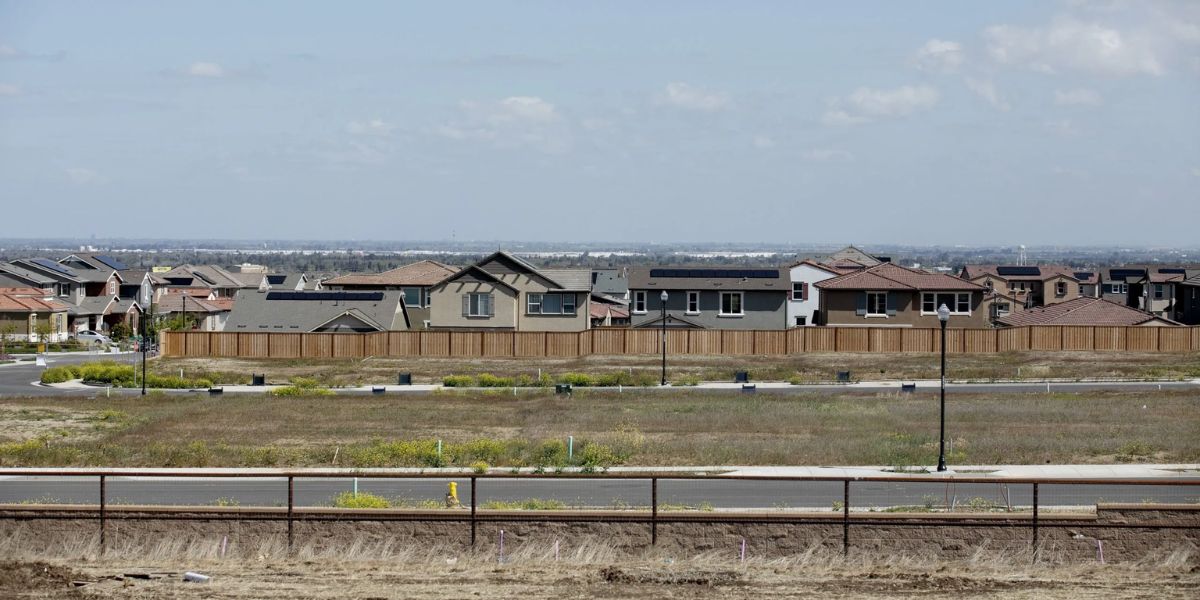MJP –
The U.S. housing market is showing signs of adjustment following the Federal Reserve’s interest rate cut in September, which lowered mortgage rates to 6.2%, the lowest since last year.
Despite a slight uptick in rates since then, the trend indicates an increase in homes on the market, prompting sellers to reduce prices to attract buyers.
In California, the median home price has seen a notable decrease, falling nearly $5,000 from August to September, settling at $425,000.
In San Francisco, the median list price is currently $997,500, with 27.4% of listings experiencing price reductions, reflecting a 1.2 percentage point increase in reductions compared to last year.

Riverside is similarly adjusting, with a median price of $599,000 and 28.1% of listings reduced in price. In San Jose, where the median list price is a striking $1,432,170, 28.2% of homes have seen reductions, with one notable property dropping $50,000 to $1.2 million.
These developments highlight the changing dynamics in California’s housing market, offering potential buyers more opportunities as sellers adjust to the current economic climate.
The California housing market, known for its notoriously high prices, is currently experiencing a notable shift. In recent months, several of the state’s most expensive cities have reported a decline in home prices, raising questions about the future of real estate in the Golden State. This article explores the factors contributing to this trend and highlights some of the cities seeing the most significant changes.
SoFA Market Marks 10 Years of Triumph in Downtown San Jose
After years of skyrocketing home prices fueled by high demand and low inventory, many regions in California are now witnessing a correction. Rising interest rates, economic uncertainties, and changes in buyer behavior are all influencing this shift. Potential homebuyers are increasingly cautious, leading to decreased competition in the market.
Key Areas Affected
- San Francisco Once regarded as one of the most expensive cities in the nation, San Francisco has seen a notable decline in home prices. The median home price has dropped as many tech workers, who previously drove demand, have opted for remote work and relocated to more affordable areas. As a result, the once fiercely competitive market has softened, leading to price reductions.
- Los Angeles The Los Angeles housing market is experiencing similar trends. Areas that were once hotbeds of activity are now seeing homes sit on the market longer. Increased inventory and a slowdown in demand have contributed to declining prices in some neighborhoods, especially those that had seen rapid appreciation in recent years.
- San Diego San Diego, known for its beautiful beaches and vibrant culture, has also felt the impact of falling prices. The median home price has dipped as buyers reassess their budgets amid rising interest rates and inflation concerns. Many prospective buyers are now looking for more affordable options, contributing to a cooling market.
- Santa Barbara The luxury market in Santa Barbara is showing signs of cooling as well. After a pandemic-fueled surge in demand, the city is experiencing a slowdown. Buyers are becoming more discerning, leading to price reductions in high-end properties that were previously in high demand.
- Sacramento Sacramento, often seen as a more affordable alternative to the Bay Area, is also facing price declines. The city has attracted many new residents, but as interest rates rise, potential buyers are pulling back. This has resulted in a more balanced market, with home prices beginning to stabilize after years of rapid growth.
Factors Influencing the Decline
Several factors are contributing to the decline in home prices across these regions:
- Rising Interest Rates: Increased mortgage rates have made home buying less affordable, leading many potential buyers to delay their purchases.
- Economic Uncertainty: Concerns about inflation and a potential recession are causing buyers to be more cautious and selective in their purchasing decisions.
- Remote Work Trends: With more companies adopting flexible work arrangements, some buyers are choosing to relocate to areas with lower living costs, reducing demand in traditionally expensive markets.
Conclusion
The recent drop in home prices across several of California’s most expensive cities marks a significant shift in the housing market. While this change may present challenges for sellers, it could also create opportunities for buyers who have been priced out of the market for years. As the landscape continues to evolve, potential homeowners should stay informed and consider their options in this dynamic market.
Whether this trend will lead to a long-term stabilization of prices or simply a temporary correction remains to be seen, but for now, the California housing market is experiencing a new chapter.




